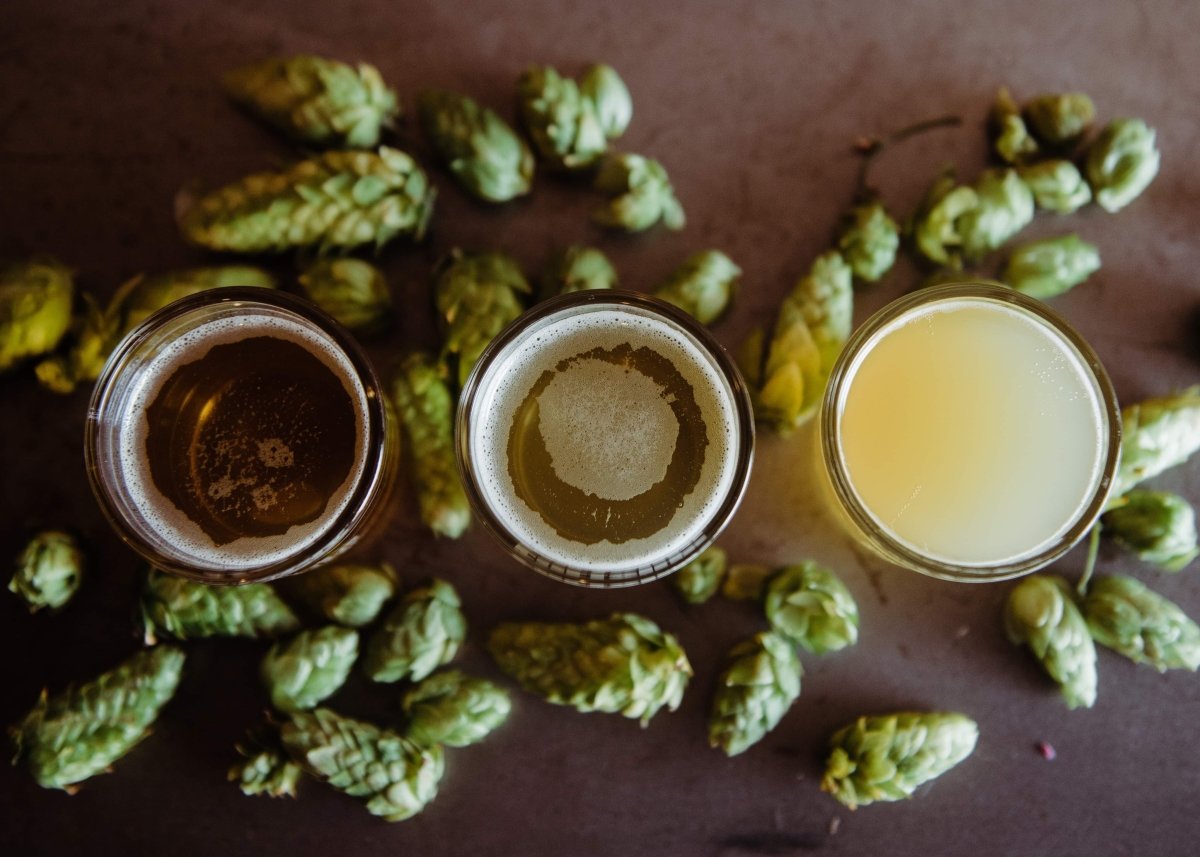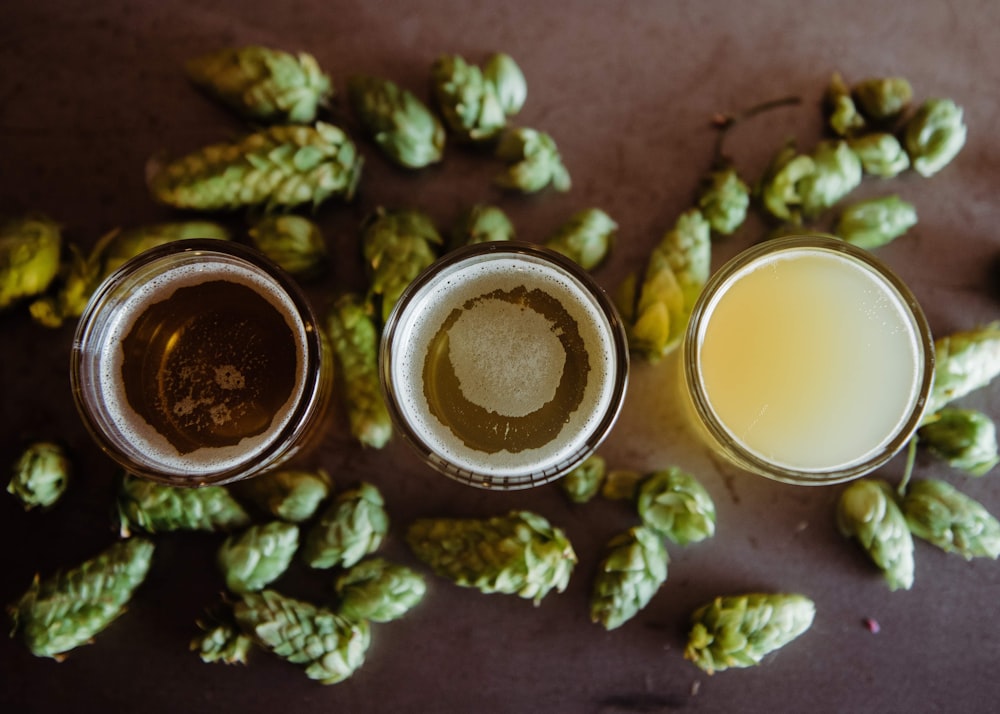Your cart is empty

SIWC Tour of Hops #2: Loral and Azacca
When it comes to flavour and aroma, the world of beer is just about as diverse as it gets. (Unfortunately, that can't be said about other aspects of the beer world where diversity and inclusivity are still lagging behind other industries. I digress...)
Today we’re back on the spice of beer - hops! Covering all that is hops on a humble blog is nay impossible. We’re giving it a try anyway–one article at a time!
You may remember that back in late 2021, we touched upon the hop basics in our article How to Brew Low ABV Beer. And in May we began to dive deeper into the hop abyss. We started with hop giants like Citra, Mosaic and our moreish Shetland Pony Ale.
Today, we are taking the road less travelled with two beautiful, underrated hops: Loral and Azacca.
Return of the Hop…History
The first documented usage of hops in beer was in 1079. You may recall that in our last Hop Tour we left off in the mid-16th century. It was during this time that the ‘wicked weed’ began to gain a foothold here on our tiny island.
For hundreds of years, the British had been drinking ‘ale’ and not so much ‘beer’. The distinction was that ale was spiced with gruit (foraged ingredients like wormwood), while European ‘beer’ was made with hops. For a plethora of speculative reasons, beer gradually increased in popularity and the British became accustomed to the bitterness of continental beers.
Until 1524 hops for brewing in the UK could only be sourced from France, Holland, and Germany. This procurement included an attached import duty. Luckily, it was around this time that British farmers started cultivating hops in the Maidstone area of Kent.
The growth of British hops accelerated due to the poor quality of imported hops arriving on our shores. Many of these bales contained leaves, stalks, powder, sand, straw, wood and other bits of debris.
Things were getting so out of hand that an Act of Parliament was passed in 1603 concomitantly with King James I. The newly passed legislation banned the use of these heavily adulterated hops. According to Parliament, the time was up for which "the Subjects of this Realm have been of late years abused”.
There were hop farms in at least 14 counties by 1655. Britain was well on its way to growing hops to be used in beers all over the world. This would coincide with the hop spark on the other side of the pond.
Over in America, English and Dutch immigrant farmers had begun hop cultivation in the New England area and beyond. These early hops were brought over from Europe; however, many native American hops species were also being discovered.
This could only mean one thing, the cross-breeding of hops from the Old World and the New World. The early seeds of modern craft brewing were planted nearly 300 years ago!
Loral
Like many American hops, Loral is a result of a private hop breeding program. Originally named HBC 291, the hop was one of the first to be produced by the Hop Breeding Company (HBC).
The John I. Haas-Yakima Chief Ranches joint venture was first formed in 2003, but Loral wasn’t released until 2016. HBC is mainly known for putting out juice heavyweights like Citra, Mosaic, and Ekuanot. The release of Loral marked a departure from the tropical and the dank for the company.
Loral boasts a pedigree that includes Nugget, Glacier, and Tardif De Bourgogne. The latter of which is a well-known French hop with perceived ‘noble’ qualities.
Noble Hops
Image source: Unsplash
Noble hops are found in many continental pale beer styles like Pilsner
If you’ve been drinking beer for a minute, you’ve likely encountered the mention of ‘noble’ hops. What exactly makes a hop ‘noble'?
Well much like the families here in the UK, it comes down to lineage and country of origin. (Only difference being noble hops aren’t able to hold onto ridiculous amounts of property and funnel wealth into their coffers through political coercion and conservative agendas. But I digress... again.)
The officially-labelled noble hops all hail from the European continent. The group share similar aromatic characteristics, mainly floral, earthy, herbal, spicy, and woody. They typically have an alpha acid content between 3-5.5%.
They are essential to classic continental styles including pilsners, kölsch and other pale beers.
Classic noble hops include
- Hallertau or Hallertauer- a region near central Bavaria
- Spalt or Spalter- a region south of Nuremberg
- Tettnang or Tettnanger- a small town in southern Baden-Württemberg
- Žatec or Saaz- a small town in Bohemia
Tardif De Bourgogne shares many characteristics with the Strisselspalt hop from the Alsace region in France. This aroma hop is believed to originate from Germany and possesses a ‘noble’ character.
Predictably enough, the flavour profile of Loral is centered around a floral aroma with heavy doses of herbal and grassy aromas. HBC 291 also packs a large amount of myrcene (citrus) and humulene (woody).
With an alpha acid content of 10-17%, Loral is a versatile dual-purpose hop. Its balanced and noble character makes it a great addition to pale lagers and IPAs.
Azacca
Azacca was named after the Haitian god of agriculture. The story of how this hop came to be isn't the typical one you might expect. To properly trace the hop’s origins we must head to the Far East.
Image source: Unsplash
Japan is host to several hop breeding programs including ones from Sapporo and Kirin
Japan is home to many more hops than just the much-polarizing Sorachi Ace (selected and bred by Sapporo). The Kirin Brewery Company cross-bred from American and European lineages to produce the Toyomidori hop.
Back in the US, the American Dwarf Hop Association (now called the Association for Development of Hop Agronomy) crossed Toyomidori with local hops to create Azacca. The end result is a hop with a pedigree that includes Northern Brewer and Summit.
Why is this important? It means that Azacca is great from an agricultural perspective. It has good to excellent downy and powdery mildew tolerance as well as a high amount of fruity essential oils (likely from Summit).
Azacca is also classified as a semi-dwarf. This means it can be grown similarly to other dwarf hops but also farmed on the standard 18-foot trellises used by traditional cultivation methods.
Dwarf Hops
The primary driver of the dwarf hop breeding programs is agronomics. Essentially, dwarf hops produce more yield with a smaller footprint. That is they have a higher cone production with a higher cone-to-leaf ratio. This all means that dwarf hops can produce more hops per acre (if the conditions are right).
Dwarf hops are good news for small and independent hop farmers and craft brewers. And according to the American Homebrewers Association, Azacca has been found to require 15 per cent less irrigation on average–so water conservationists can also rejoice!
Azacca is a punchy dual-purpose hop with an alpha acid content of 14-16%. Its total oil content of 1.6-2.5 ml/100g puts it squarely in between that of Citra and Amarillo. And funnily enough, both hops are viewed as decent substitutes for Azacca.
Likewise, Azacca is heavy on the citrus, tropical, and stone fruit character. It thrives in pales, IPAs, sours, saisons and more. Azacca plays well with other hops but is also bold enough to shine on its own.
Please & Thank You Rice Lager
One last thing, before you exit the hop tour bus today - you how have a lot knowledge about Loral and Azacca hops, but you're not an expert until you can taste what these hops can really do for a beer. Funnily enough, we have a beer that not only contains both of these hops, but it's a beer you won't find anywhere else...

Please & Thank You Rice Lager, our collaboration with the #wrestingling demons project
Our Please & Thank You Rice Lager is a collaboration with the #wrestlingdemons project. For every can of Please & Thank You Rice Lager sold, 25p is donated towards offering one-to-one therapy sessions for hospitality staff who’ve taken the brunt of all COVID and post-covid activities.
Besides supporting the mental well-being of some of the hardest workers out there, our Rice Lager provides a clean and crisp drinking experience. Thanks to the rice proving a delightfully smooth creaminess, this lager goes down all too easily and is the perfect beverage to showcase the nuances of both Loral and Azacca. One hop traces its origins to Japanese Lager and the other to German Noble hops. We think that together, they form an excellent marriage of refreshing, floral and citrus aromatics.
We hope you’ve enjoyed stop #2 on our Tour of Hops as much as we have. Sometimes, the classic floral and herbal characters of less tropical hops just can’t be beaten! Not to mention, we always love learning more about agronomy improvements, especially those that make any step in the beer production chain more sustainable.
Until next time, be sure to grab a few cans of Please & Thank You before it’s all gone, so you can further expand your hop palate!
- Choosing a selection results in a full page refresh.




